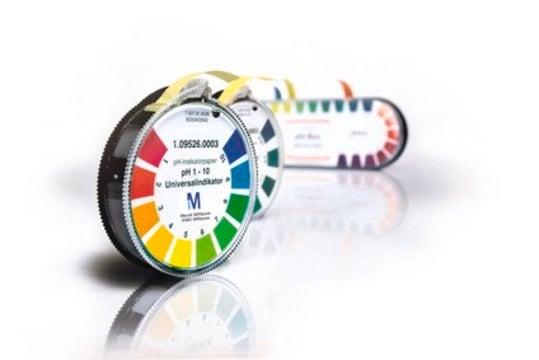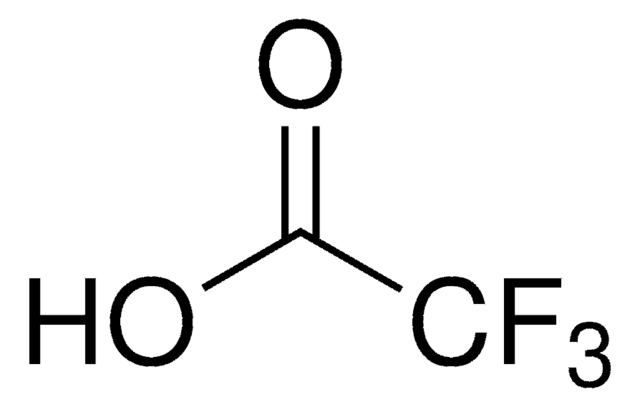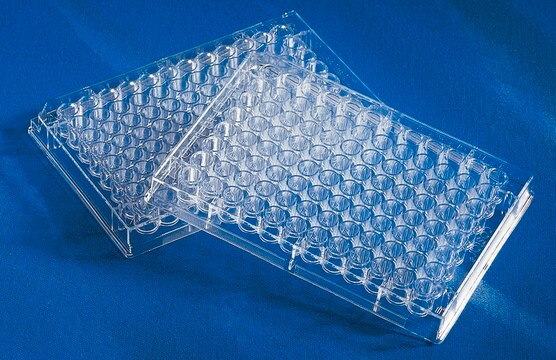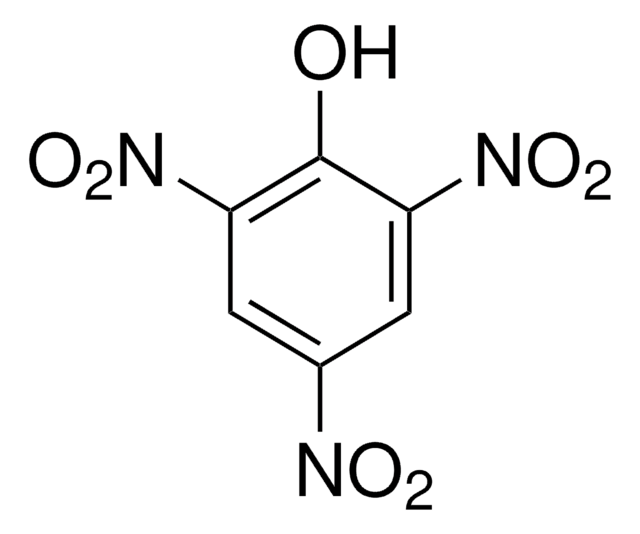467863
Lead(II) acetate trihydrate
≥99.99% trace metals basis
Sinonimo/i:
Lead diacetate trihydrate
About This Item
Prodotti consigliati
Saggio
≥99.99% trace metals basis
Forma fisica
solid
Impiego in reazioni chimiche
core: lead
reagent type: catalyst
Impurezze
≤0.01% insolubles
<100 ppm total metallic impurities
Punto di fusione
75 °C (dec.) (lit.)
Anioni in tracce
NO3- and NO2-: ≤0.005%
chloride (Cl-): ≤5 ppm
Cationi in tracce
Ca: ≤0.005%
Cu: ≤0.002%
Fe: ≤0.001%
K: ≤0.005%
Na: ≤0.01%
Stringa SMILE
O.O.O.CC(=O)O[PbH2]OC(C)=O
InChI
1S/2C2H4O2.3H2O.Pb/c2*1-2(3)4;;;;/h2*1H3,(H,3,4);3*1H2;/q;;;;;+2/p-2
MCEUZMYFCCOOQO-UHFFFAOYSA-L
Cerchi prodotti simili? Visita Guida al confronto tra prodotti
Descrizione generale
Applicazioni
- In the preparation of lead lanthanum zirconate stannate titanate (PbLa(ZrSnTi)O3) antiferroelectric (AFE) ceramics for dielectric capacitors
- As a precursor to synthesize lead chalcogenides such as lead sulfide (PbS), lead selenide (PbSe) and lead telluride (PbTe) nanostructures.
- In the synthesis of organic-inorganic halide perovskites (OIHPs) as optoelectronic materials for solar cells and light-emitting diodes.
Avvertenze
Danger
Indicazioni di pericolo
Consigli di prudenza
Classi di pericolo
Aquatic Acute 1 - Aquatic Chronic 1 - Carc. 2 - Eye Dam. 1 - Lact. - Repr. 1A - STOT RE 1
Organi bersaglio
Central nervous system,Blood,Immune system,Kidney
Codice della classe di stoccaggio
6.1C - Combustible acute toxic Cat.3 / toxic compounds or compounds which causing chronic effects
Classe di pericolosità dell'acqua (WGK)
WGK 3
Punto d’infiammabilità (°F)
Not applicable
Punto d’infiammabilità (°C)
Not applicable
Dispositivi di protezione individuale
Eyeshields, Gloves, type P3 (EN 143) respirator cartridges
Certificati d'analisi (COA)
Cerca il Certificati d'analisi (COA) digitando il numero di lotto/batch corrispondente. I numeri di lotto o di batch sono stampati sull'etichetta dei prodotti dopo la parola ‘Lotto’ o ‘Batch’.
Possiedi già questo prodotto?
I documenti relativi ai prodotti acquistati recentemente sono disponibili nell’Archivio dei documenti.
Articoli
Since the first report of the low-cost dye-sensitized solar cell (DSSC) in 1991 by Gratzel and his coworker,1 dye-sensitized solar cells (DSSC) has been regarded as one of the most promising photovoltaic technologies because of their transparent and colorful characteristics, as well as low cost.
Il team dei nostri ricercatori vanta grande esperienza in tutte le aree della ricerca quali Life Science, scienza dei materiali, sintesi chimica, cromatografia, discipline analitiche, ecc..
Contatta l'Assistenza Tecnica.







